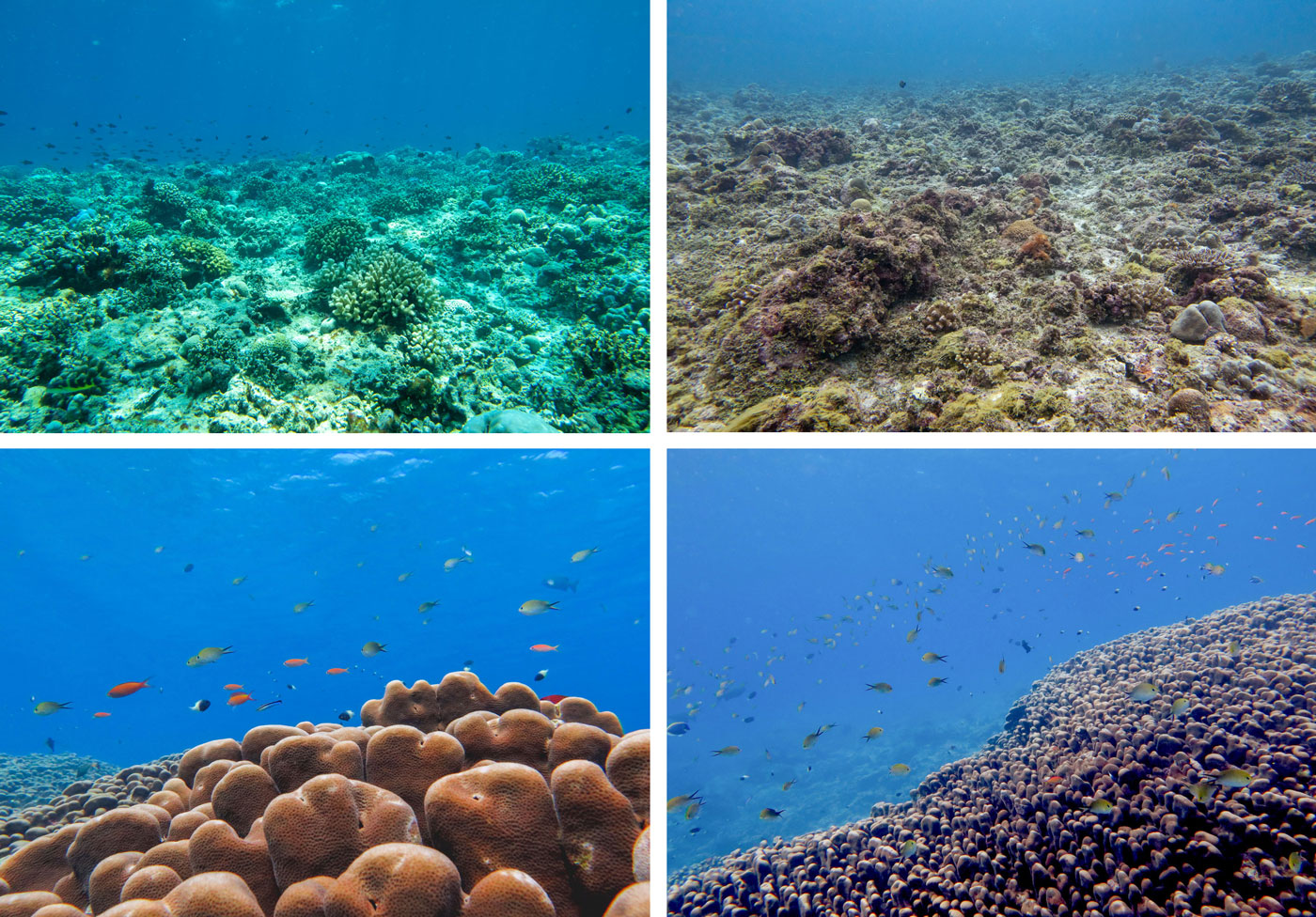Lakshadweep, renowned for its unspoiled atolls, stunning reefs, and serene inhabited islands, is currently facing an unprecedented crisis as extensive coral bleaching is occurring due to marine heatwaves.
The ICAR-Central Marine Fisheries Research Institute reported on Monday that a widespread bleaching event is underway in the Lakshadweep Sea. Marine heatwaves are extreme weather phenomena characterized by prolonged periods of abnormally high ocean temperatures, often exceeding the 90th percentile of typical regional ocean temperatures based on historical data.
In Lakshadweep, the Degree Heating Week (DHW) indicator, which measures accumulated heat stress, has risen above 4 degrees Celsius-weeks, posing a significant risk of coral bleaching. Coral bleaching happens when water temperatures become excessively warm, causing corals to expel the microscopic algae residing within their tissues. This results in the corals’ transparent tissues revealing their white skeleton, a phenomenon known as coral bleaching. While bleached corals are not dead, they are at risk of starvation and disease.
Since October 27, 2023, the Lakshadweep Sea has experienced temperatures 1 degree Celsius above the norm, with changes in ocean currents contributing to unusually high water temperatures. This current event surpasses previous occurrences in 1998, 2010, and 2015, indicating the severity of the crisis.
The repercussions of marine heatwaves and coral bleaching extend beyond Lakshadweep, threatening the livelihoods of coastal communities, tourism, and fisheries sectors, as well as critical marine habitats such as seagrass meadows. Similar to corals, seagrass meadows and kelp forests are suffering detrimental effects such as impaired photosynthesis, reduced growth, and hindered reproductive functions due to the heatwaves.
The future of the Lakshadweep Islands is also concerning regarding rising sea levels. A study conducted by IIT Kharagpur and the Department of Science & Technology predicts a disturbing sea level rise of 0.4-0.9 mm/year for this archipelago. As ocean water encroaches on land, it causes coastal erosion and land loss, hindering the formation of new corals.
The Indian Ocean basin, known as the fastest warming basin globally, is projected to experience accelerated warming during 2020-2100, leading to an increase in severe weather events, prolonged marine heatwaves, and extreme Indian Ocean Dipole events that will affect the monsoon and cyclone development.
A dire prediction from the US National Oceanic and Atmospheric Administration (NOAA) has marine biologists on high alert following a series of record-breaking ocean temperatures driven by climate change and the El Niño climate pattern.

The crisis in Lakshadweep necessitates urgent action to mitigate the impacts of marine heatwaves and coral bleaching. Improved insights into marine heatwaves and species’ coping mechanisms will enhance the resilience of fisheries.
Best Time To Visit Lakshadweep
| Time of Year | Visit Status |
|---|---|
| Year-round | Destination |
| OCT-FEB | Peak Season |
| MAR-MAY | Moderate Season |
| JUN-SEP | Off-season |
What to Expect: Comfortable weather with temperatures not exceeding 30°C.
Things You’ll Love: Enjoying pleasant sea breezes and the soothing sunny mornings on the beach.

If you want to visit Lakshadweep then you must know:
